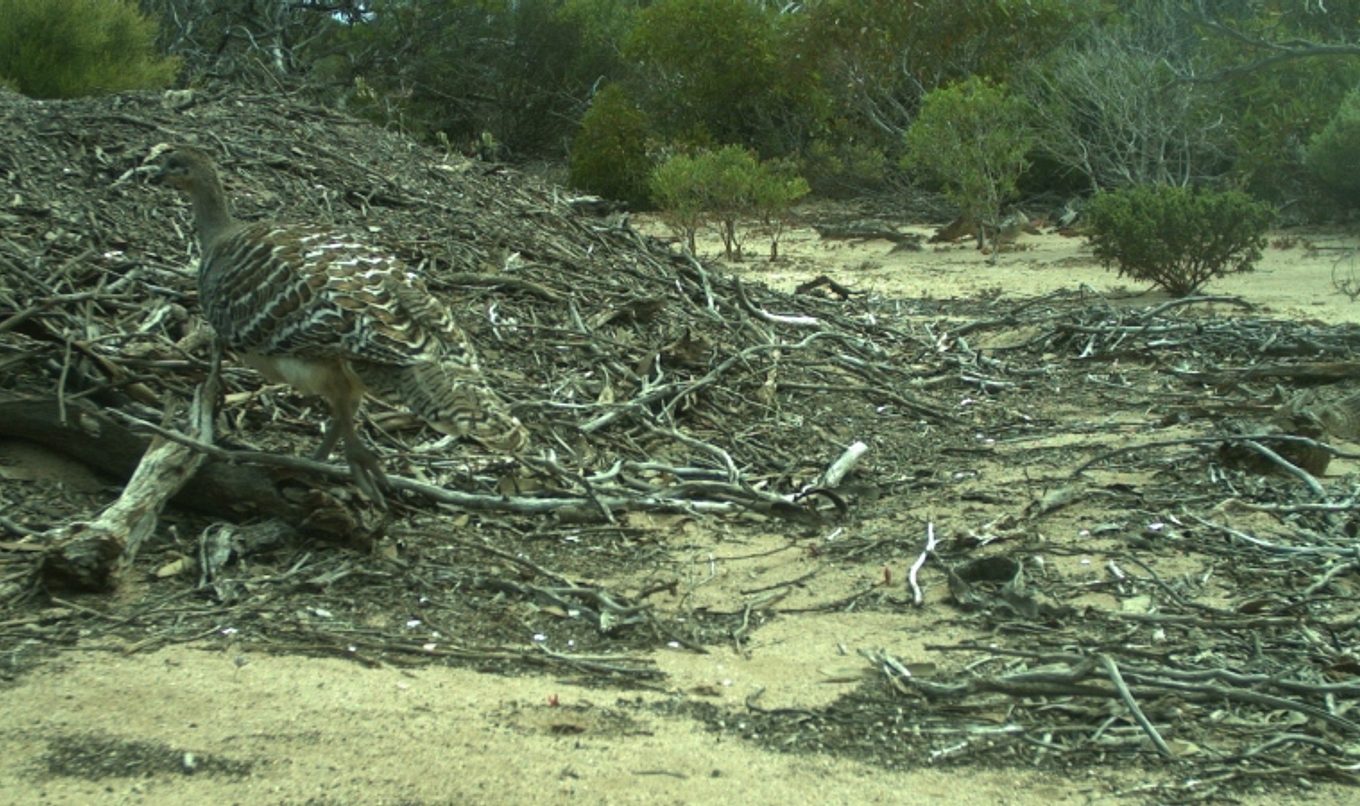Malleefowl breed at Venus Bay Conservation Park
Venus Bay Conservation Park rangers have been buoyed by the discovery of an active malleefowl nest mound within the park.

Senior Ranger David Grosse said this was a significant find for the National Parks and Wildlife Service.
“It’s a sign that this nationally vulnerable species has finally been discovered breeding within the park,” Mr Grosse said.
“This malleefowl breeding attempt is the first in half a century or so for this particular area, and a first recorded behind the predator-proof fence since the area was proclaimed a Conservation Park in 1977”.
“The nest mound is a typical size, measuring four metres wide by one and a half metres in height.
“We also found broken pieces of malleefowl egg shell on the surface, pieces the size of the palm of your hand.
“Egg pieces like this indicate malleefowl chicks had likely hatched recently.
“This find reinforces the importance of our on-park work protecting native fauna from threats such as feral cats and over abundant native species.”
As well as being the first recorded malleefowl mound within Venus Bay Conservation Park, it is also the first for the Eyre District located using a remote sensing technique called LiDAR (Light Detection and Ranging).
Technology such as LiDAR, remote cameras and online citizen science reporting portals are increasingly being used by rangers on Eyre Peninsula to conduct conservation work.
“Historically, we know malleefowl were rarely sighted in Venus Bay Conservation Park, however in May, and again, in November last year our remote cameras captured photographs of malleefowl within the park.
“Being able to use such accurate spatial data such as LiDAR and remote cameras in combination is exciting, I’m keen to see what the newly placed camera near the mound captures.”
Senior Natural Resources Officer Liz McTaggart explains timely funding helped to bring about this conservation outcome.
“Searching for a cryptic threatened species like a malleefowl in 1,500 odd hectares of coastal mallee park land is quite literally like trying to find a needle in a haystack,” Ms McTaggart said.
“With a little luck our network of remote motion sensing cameras, funded through the Australian Government Targeted Area Grants to gather photographic evidence for feral cats / greater bilby’s and brush-tailed bettongs, also snapped us some photos of malleefowl.
“Coupled with information from LiDAR we have an efficient technique allowing much larger areas to be surveyed at a fraction of the cost, helping us pin point our conservation actions.
“A single location described as ‘highly likely to be a nesting site’ (class one site), which in our case was correct, was identified through an assessment of existing LiDAR data funded by groups within the Department for Environment and Water.
“We have a further 46 ‘likely be to potential nest mounds (class two sites)’ still to check and I hope once we are done we can increase the known breeding range of this threatened species.
Natural Resources Eyre Peninsula have received online reports from local residents through the website www.epmalleefowl.com.au observing malleefowl near Witera, Venus Bay, Lincoln National Park and north of Whyalla.
For more information please call 8626 1108 or visit the Natural Resources EP website.

